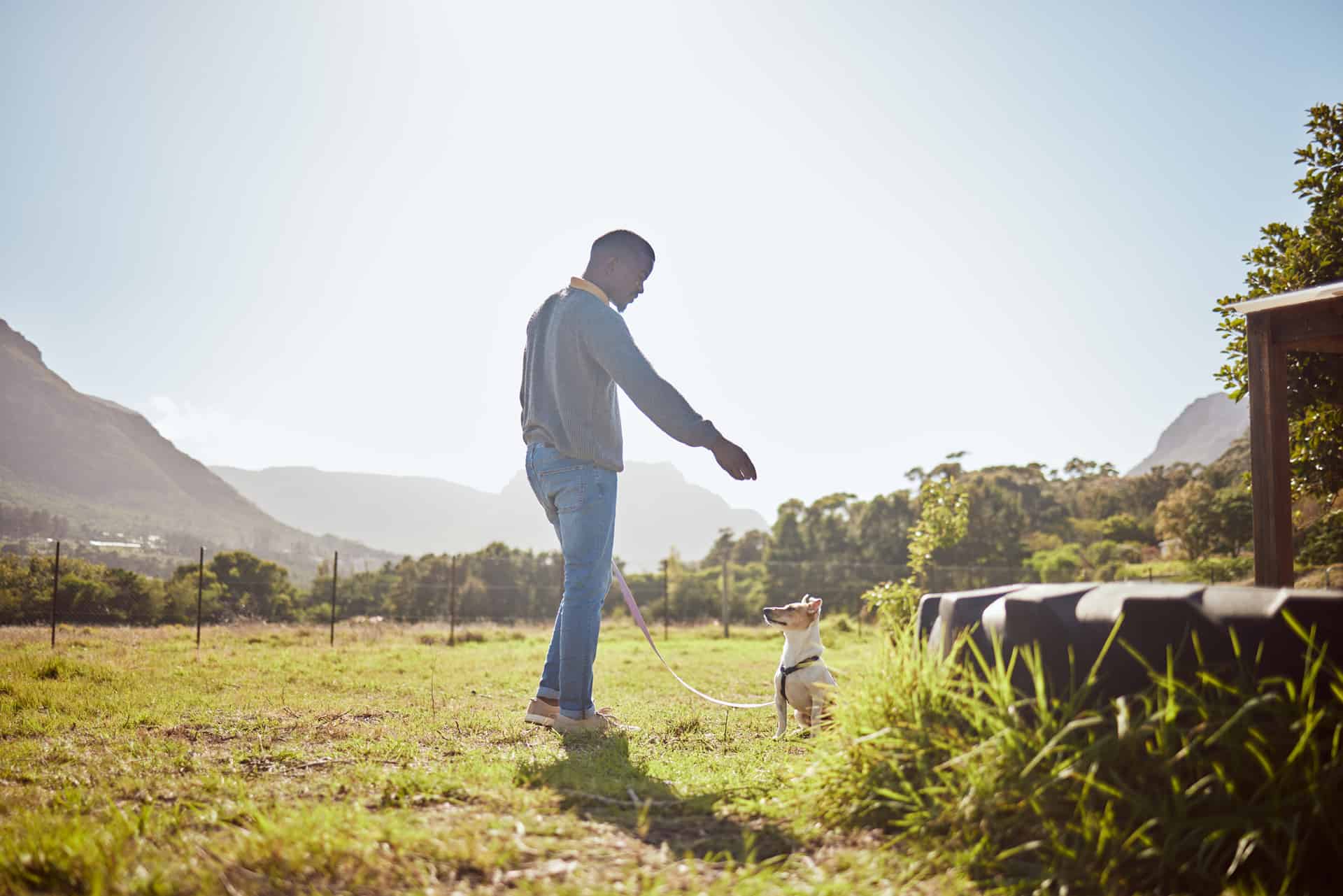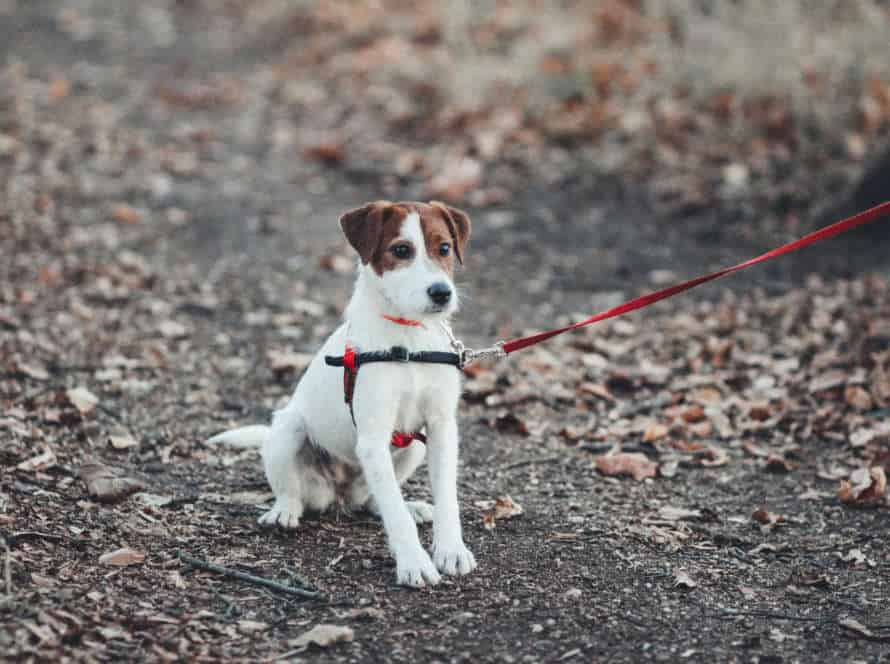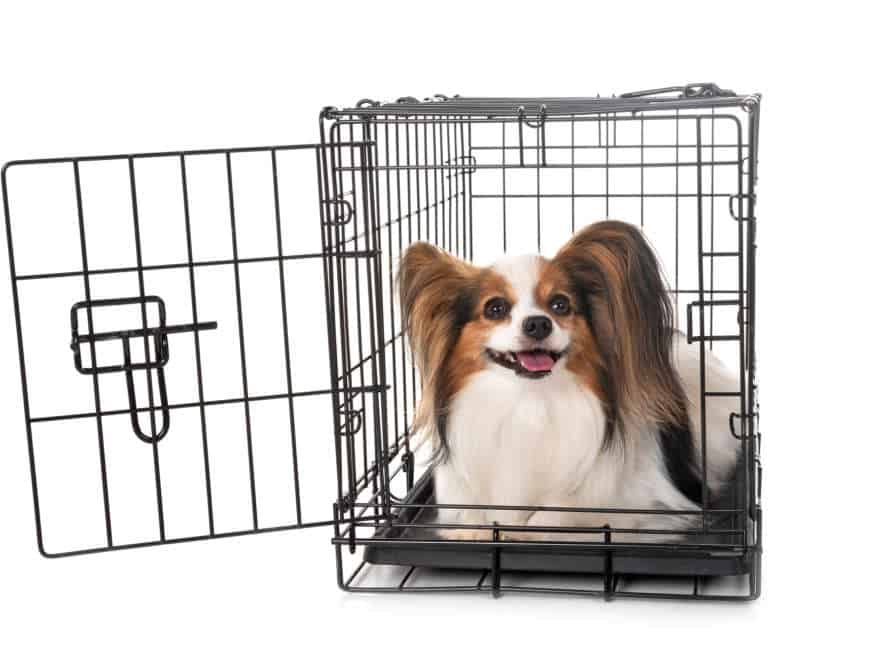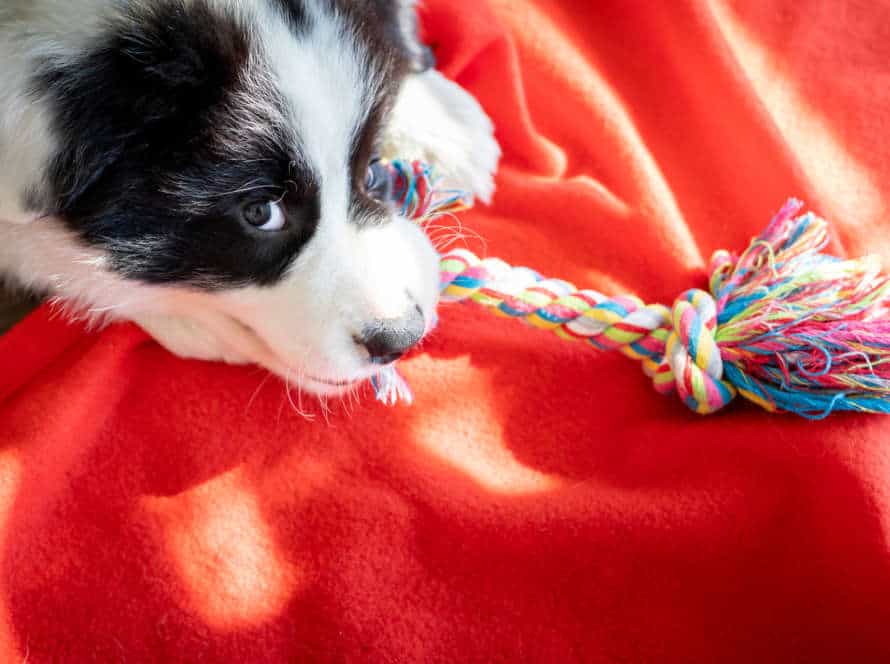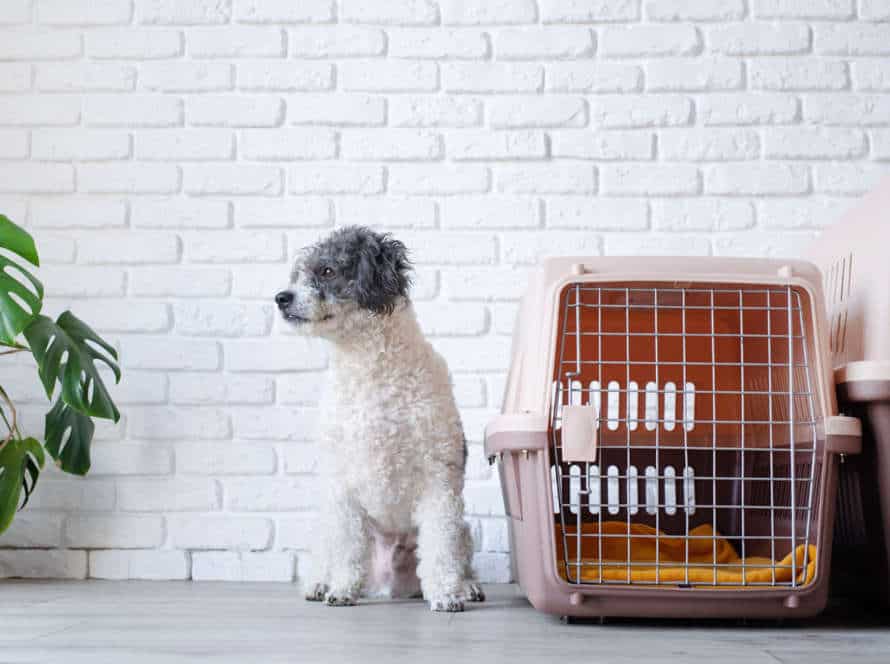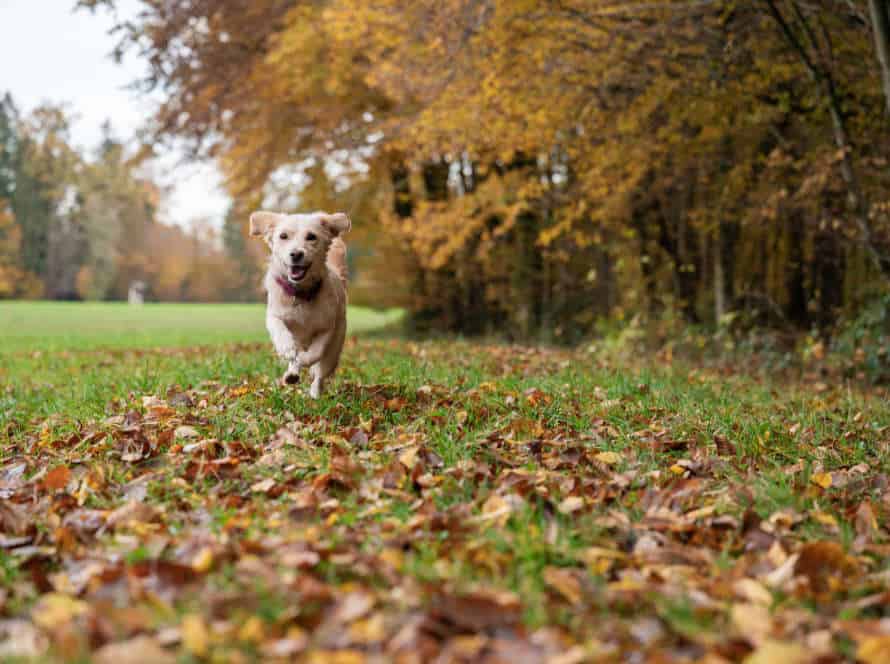The Role of Redirecting and Reinforcing Calm Behavior in Leash Biting Prevention
Leash biting is a tricky and risky thing. To stop it, you need to teach your pup calm behavior using positive reinforcement. Here are some tips:
- Bring treats on your walks and reward your fur-friend for good behavior.
- When they start to show signs of aggression, calmly distract them with a treat or toy.
- Do calming exercises before and during walks, like deep breaths and relaxation techniques.
- Socialize your pup regularly with other dogs and people. This will reduce stress and boost their confidence.
By reinforcing good behavior and occupying their energy, you can avoid leash biting and have a peaceful walk with your pup.
Understanding the Root Cause of Leash Biting
Leash biting is a common issue for lots of dog owners. Let’s talk about how to stop it. What’s the root cause? Anxiety, fear, or other negative emotions that make dogs aroused. Owners can try redirecting and reinforcing calm behavior. This article will show how to manage a dog’s emotions and stop leash biting.
Identify Triggers for Leash Biting
Leash biting is a troublesome behavior most pooch owners have to manage. To solve the problem and stop it, it’s important to find out what triggers the biting.
Here are some common causes:
- Anxiety and fear – Dogs that are anxious or scared might bite their leashes as a way of handling it.
- Boredom – Dogs that don’t have enough activity might bite their leashes as a way of dealing with stress.
- Playfulness – Depending on your canine’s character, they may view the leash as a toy and bite it when on walks.
To prevent leash-biting, switch your pup’s attention to an approved chew toy or a handler’s reward. With patience and encouragement, you can help your dog defeat leash-biting and save yourself the difficulty.
Recognize Signs of Aggression or Fear
Dog owners must know how to spot signs of aggression or fear in their pets. These can include growling, barking, snarling, baring teeth, and lunging. Afraid dogs may cower, hide, shake, pant, or whine.
To stop leash biting, one must understand why it happens. Reasons could be boredom, anxiety, frustration, or lack of training. Redirecting and rewarding calm behavior is key. Teach the “leave it” command, give interactive toys/chews, and exercise your dog. Positive reinforcement like treats and praise will help reinforce calmness.
Determine if Your Dog is Overstimulated
Observe your pup’s body language and behavior on a leash to determine if they’re overstimulated. Signs can be panting, rapid breathing, and excessive pulling. They may also bark or growl at cars/pedestrians. Overstimulation can cause leash biting and other anxious behaviors.
As a pet owner, address the root cause of the overstimulation to prevent leash biting. Redirect pup’s attention and reinforce calmness. Give them enough exercise and mental stimulation to avoid pent-up energy which can lead to overstimulation.
Redirecting Your Dog’s Behavior
Dogs that bite leashes can be trying to tell us something. Usually, this type of behavior is from an issue underneath that needs to be solved. We can start resolving it by redirecting the pup’s behavior and reinforcing peacefulness.
Let’s see how redirecting the dog’s behavior can help stop leash biting.
Train and Reward Positive Behaviors
Train & reward your pup’s positive behaviors! This is crucial for stopping leash biting & calming them.
Identify which behaviors you want to reinforce, like sitting still or walking calmly on a leash.
Use positive techniques like treat rewards, verbal praise, or physical affection to reward them.
Do this consistently to make it a habit.
Redirect leash biting with a toy or treat.
Give rewards for calm behavior when walking on a leash.
Be patient & consistent. It may take time to learn the reward system.
Use Distraction Techniques to Redirect Attention
Distraction techniques are an awesome way to switch a pup’s attention and avoid undesired behavior, like leash biting. Here are some ideas:
- Offer another toy. When your pup starts gnawing on the leash, give them a chew toy or another toy to play with.
- Give verbal instructions. Utter firm yet relaxed commands to your pup, such as “sit” or “stay”, to move their focus.
- Switch direction. When your pup starts biting the leash, quickly turn around and go in the opposite direction to take their attention off it.
- Reward calmness. Whenever your pup shows calm behavior, treat them or praise them to reinforce that behavior.
By consistently using these distraction techniques, you can change your pup’s behavior, increase their calmness, and stop leash biting in the future.
Practice Calming Exercises to Reduce Anxiety
This article talks about how calming exercises help lessen anxiety in people. For pooches that bite the leash, redirecting their actions through calm reinforcement is an effective way to keep them in check.
Here are some calming exercises that can assist with anxiety:
- Deep breathing
- Mindfulness meditation
- Doing yoga and stretching
- Visualization techniques
For leash-biting canines, redirecting their aggressive behavior with calm reinforcement can help them relax and conquer their fear or anxiety. On walks, for example, you can give alternative activities like playing fetch or giving treats when the dog walks without biting the leash. This will establish positive training and high reinforcing values, helping your pup transform and form a strong bond with you.
Reinforcing Calm Behavior
Redirecting and reinforcing calmness is key for preventing leash biting. Redirect your dog’s focus from the excitement and barking to something harmless and more manageable. Reward your pup with treats, love and positive reinforcement when they behave well, like sitting calmly or walking on a loose leash. Doing this not only helps stop leash biting, but also encourages good habits.
Praise and Reward Calm Behavior
To stop leash biting in dogs, it’s important to praise and reward calm behavior. Redirect their attention & reinforce it for the best results. Here’s how:
- Redirect Attention: If the pup starts biting, distract them with a toy or treat.
- Praise Calm Behaviour: When they stay still, give them verbal praise & pets.
- Use Rewards: Give treats & toys as a reward for calm behaviour.
- Consistency: Make sure you reward good behaviour each time.
By following these steps, you can train your furry friend to stop leash biting & show calm behaviour.
Use Positive Reinforcement Techniques
Positive reinforcement is a helpful way to stop leash biting in dogs. It helps to prevent bad behavior and also strengthens the bond between you and your pup. Here are some tips for using positive reinforcement:
- Reward your dog with treats, praise, or affection when they show calm behavior like sitting or lying down.
- Redirect their energy to something positive, like a toy or commands.
- Speak to them in a consistent and positive tone to communicate and reinforce calm behavior.
- Be patient and consistent. Use positive reinforcement over time to teach your dog healthy habits and behaviors. This will make them happier and better adjusted.
Avoid Punishment and Negative Reinforcement
Rather than punishing or scolding your pooch for leash biting, try reinforcing calm behavior.
Distract your dog with a toy or treat when they start biting.
Positively reinforce calmness with praise, petting or a treat.
A shorter leash reduces the chance of your pup reaching the leash with their mouth. Give them something else to carry, like a chew toy or ball, to redirect their biting.
Redirect and reinforce calmness to help your dog learn to behave without punishment or negative reinforcement. This will lead to a happier pup and a better relationship between you and your pet.
Additional Strategies for Leash Biting Prevention
Leash biting can be an annoying and dangerous problem. Owners have strategies to help. Redirecting and reinforcing calm behavior is key. It means turning away from the thing that causes biting, and rewarding calmness. This article will discuss more strategies for leash biting prevention.
Invest in a No-Pull Harness or Head Collar
Investing in a no-pull harness or head collar can help stop leash biting in dogs. This equipment offers more control when walking and stops your dog from reaching the leash.
Additionally, redirecting and reinforcing calm behavior can also help. Bring a toy or treat your dog likes. When they show signs of wanting to bite the leash, redirect their attention to the toy or treat. Praise and reward them for staying calm while walking. This will make them less likely to bite the leash in the future.
Use Toys or Interactive Treat Dispensers to Distract Your Dog
If your pup has a habit of chomping their leash during walks, one way to stop it is to use toys or interactive treat dispensers as a distraction. Redirect their attention to the toy or dispenser instead of the leash. Choose something they like and make sure to bring it with you. When they start to bite, give them the toy or treat-dispenser. Eventually, they’ll learn that walking means playing or getting treats, meaning they won’t want to bite the leash. This should be done alongside other strategies, such as reinforcing calm behavior and using positive reinforcement.
Consider Working with a Professional Dog Trainer or Behaviorist.
Is your pup persistently chomping at the leash? Time for a professional dog trainer or behaviorist! They can assess your pup’s behavior and create a custom plan. Plus, redirect and reward calm behavior. Offer treats or praise when they don’t bite. You can also distract them with a toy or treat. Just remember: consistency is key! Be patient and stick to the plan for the best results.
Frequently Asked Questions
1. What is leash biting and why do dogs do it?
Leash biting is when a dog bites or chews on the leash during walks. Dogs may do this out of excitement, boredom, anxiety or a desire to play.
2. How can redirecting and reinforcing calm behavior prevent leash biting?
Redirecting and reinforcing calm behavior involves teaching your dog alternative, more appropriate behaviors during walks. For example, rewarding your dog for walking calmly and ignoring the leash can help reduce the desire to bite or chew on it.
3. What are some effective techniques for redirecting and reinforcing calm behavior?
One effective technique is to carry treats during walks and offer them as a reward for calm behavior. Another technique is to teach your dog a “leave it” command, which can be used to divert their attention away from the leash.
4. How long does it take to see results using redirecting and reinforcing calm behavior?
The length of time it takes to see results will vary based on your dog’s individual behavior and training needs. Consistency and positive reinforcement are key to successful outcomes.
5. Are there any other ways to prevent leash biting?
In addition to redirecting and reinforcing calm behavior, providing plenty of exercise and mental stimulation can help prevent leash biting. Using a front-clip harness or head collar can also discourage biting by providing more control over your dog’s movements on walks.
6. When should I seek professional help for leash biting?
You should seek professional help if your dog’s leash biting is persistent and cannot be resolved with basic training techniques. A professional dog trainer or behaviorist can evaluate your dog’s behavior and create an individualized training plan to address the issue.

